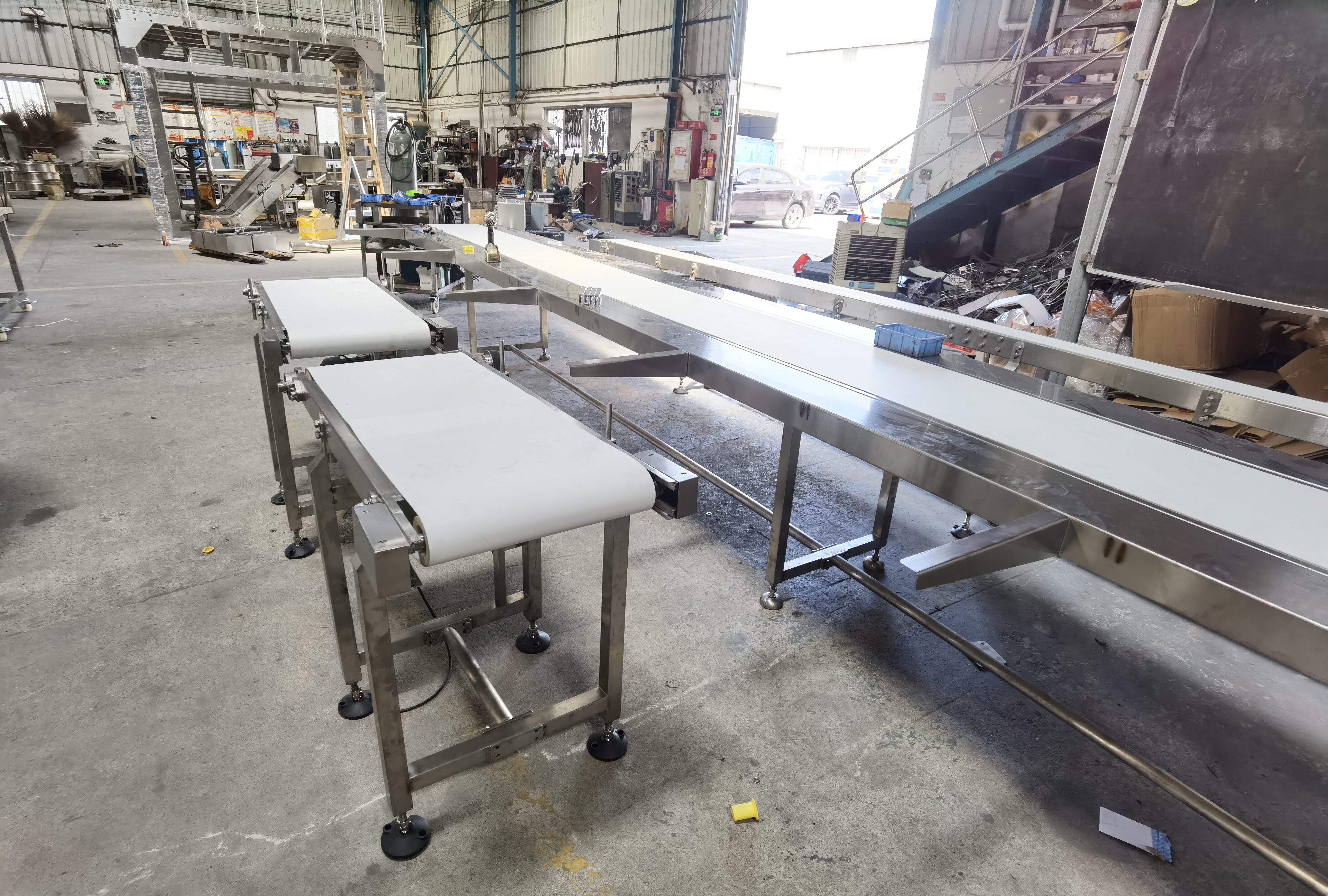When installing a belt conveyor, first ensure that the belt joints are straight to ensure the quality of the rack installation and reduce or eliminate installation errors. If the rack is severely skewed, the rack must be reinstalled. The usual way to adjust the bias in a trial run or strategy run is as follows:
1. Adjust the roller
For belt conveyor lines supported by rollers, if the belt is offset in the middle of the entire conveyor line, the position of the rollers can be adjusted to adjust for the offset. The mounting holes on both sides of the roller frame are machined into long holes for easy adjustment. of. The adjustment method is: which side of the belt the belt is on, move one side of the idler in the forward direction of the belt, or move the other side of the idler backward.

2. Adjust the roller position
The adjustment of driving pulley and driven pulley is an important part of belt deviation adjustment. Since a belt conveyor has at least 2-5 rollers, theoretically the axes of all the rollers must be perpendicular to the centerline of the length of the belt conveyor, and they must be parallel to each other. If the roll axis deviation is too large, the deviation must occur for A.
Since the position of the drive pulley is usually adjusted to a small or impossible range, the position of the driven pulley is usually adjusted to correct for belt offset. Which side of the belt is offset in order to adjust one side of the driven pulley to the forward direction of the belt, or to slack the other side in the opposite direction. Repeated adjustments are usually required. After each adjustment, let the belt run for about 5 minutes, while watching and adjusting the belt, until the belt is adjusted to the ideal running state and does not come off.
In addition to the offset of the belt that can be adjusted by the driven pulley, the same effect can be achieved by adjusting the position of the tensioner pulley. The adjustment method is exactly the same as the picture above.
For each roller whose position can be adjusted, a special waist-shaped groove is usually designed at the shaft installation, and a special adjusting screw is used to adjust the position of the roller by adjusting the roller drive shaft.
3. Other measures
In addition to the above adjustment measures, in order to prevent belt deflection, the diameter of both ends of all rollers can be designed to be about 1% smaller than the middle diameter, which may impose partial constraints on the belt to ensure the normal operation of the belt.
Belt conveyor manufacturers introduce the above various belt offset adjustment methods. It is recommended that users master the law of belt deviation, usually check and maintain the equipment, find and solve problems in time, and prolong the service life of the belt conveyor.
Post time: Sep-07-2022
